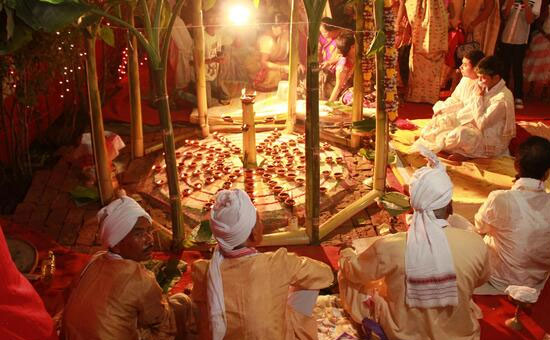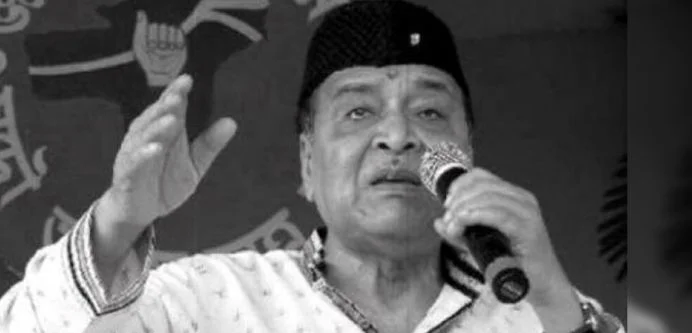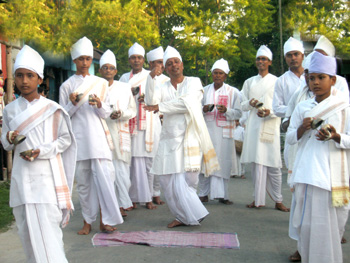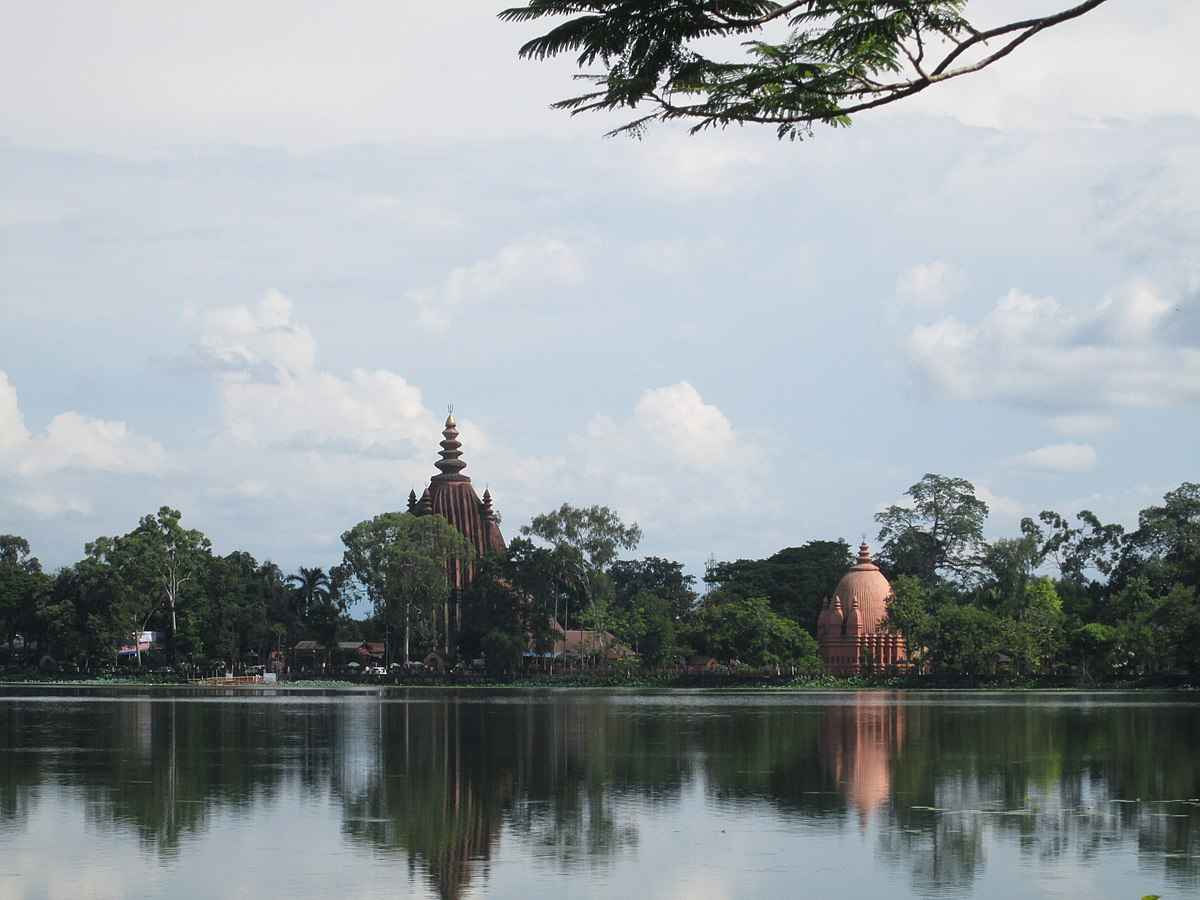Assamese culture is rich and diverse, characterized by a vibrant blend of traditions from various communities. This cultural mosaic makes Assam a colorful tapestry of rituals and customs, especially evident in its social festivals. One of the most significant aspects of Assamese culture is its diverse marriage practices, which vary from region to region. In Assam, marriage is known as “biya,” and the ceremony is a unique celebration of the union between the “dora” (groom) and “koyna” (bride). Among the Ahom community, this sacred tradition is called “chaklang.”
The Ahom marriage ceremony, known as “chaklang,” plays a crucial role in maintaining the social fabric of the Ahom community. As noted by P. R. Gurdon in the Encyclopaedia of Religion & Ethics (Vol I, p. 235), “The real Ahom rite is the chaklang.” During this ceremony, the Ahom priest recounts the family histories and the heroic deeds of the ancestors from both sides, thereby instilling a sense of pride and continuity in the newlyweds.
The Gauhati High Court has officially recognized chaklang as the customary marriage system of the Ahom community. Unlike other marriage rituals that involve a homa or saptapadi ceremony before a sacred fire, the Ahoms, with a few exceptions, strictly adhere to the chaklang tradition. This practice has deep historical roots, dating back to the time of the Ahom kings, such as Swargadev Rajeswar Singha, who married Manipuri Princess Kuranganayani through a chaklang ceremony.
The origins of this tradition can be traced back to the marriage of Lengdon, who sent a symbolic gift of betel leaves and areca nuts, beautifully arranged on a Sarai (a platter with a stand) and covered with handmade red towels, to the eldest daughter of Ak-Kai-Mo-Hung, Nang-Hun-Hpa. This gesture marked the beginning of the chaklang custom, which has since become an integral part of Ahom culture.
Origins and Significance of Chaklong
- Nang-hun-pha: The Inaugural Chaklong Marriage
- The Chaklong tradition traces its roots back to the 13th century when the Ahom people migrated to Assam from Dehong, Yunnan, China.
- Legend has it that Lengdon, an Ahom prince, married the eldest daughter of Ak-Kai-Mo-Hung, Nang-Hun-Pha. This union marked the inception of the Chaklong custom.
- Nang-Hun-Pha’s marriage to Lengdon set a precedent for subsequent Chaklong ceremonies.
- Social Coherence and Cultural Identity
- Chaklong plays a vital role in maintaining social coherence within the Ahom community.
- By adhering to this tradition, Ahoms reinforce their cultural identity and heritage.
- The practice of Chaklong fosters a sense of belonging and unity among community members.
In summary, the Chaklong tradition is not only a celebration of love and union but also a powerful symbol of Ahom culture and continuity. It stands as a testament to their rich history and shared values.
Rituals and Customs of Chaklong
- Intermarriage Restrictions:
- Ahoms strictly prohibit intermarriage within the same clan.
- This practice ensures that marriages occur between different lineages, maintaining diversity and preventing close blood relations from uniting.
- Sodhanibhar (The Ceremonial Gift):
- The boy’s family initiates the Chaklong process by approaching the girl’s family.
- They bring a ceremonial gift, which includes items like betel nuts, leaves, rice, ducks, and other symbolic offerings.
- The Sodhanibhar signifies respect and goodwill between the families and symbolizes the boy’s intention to marry the girl.
- Observation Visit:
- The girl’s family visits the boy’s home for an observation visit.
- During this visit, they closely observe the boy’s lifestyle, family dynamics, and living conditions.
- Based on their assessment, the families finalize the wedding date and other arrangements.
- The Wedding Ceremony:
- Circling Ritual: The bride circles the groom seven times during the wedding ceremony. This act symbolizes their eternal bond and commitment to each other.
- Tying the Cloth: In a private room, a cloth is tied around the bride’s neck, signifying their union. It represents the thread of love and togetherness.
- Nine Water Vessels: Nine vessels filled with water are arranged. The Siring phukam (master of ceremonies) recites from the ‘Choklong puthi,’ invoking blessings for the couple.
- Exchange of Knives and Rings: The pivotal moment arrives when the bride and groom exchange knives and rings. This act symbolizes their shared responsibilities and trust.
- Respecting Parents and Guests: The newlyweds pay their respects to the bride’s parents and guests, seeking their blessings and goodwill.
Legal Recognition of Chaklong
In a significant ruling, the Hon’ble High Court of Gauhati officially recognized Chaklong as the customary Ahom marriage system. This legal validation underscores the cultural importance and historical significance of Chaklong within the Ahom community. It solidifies the tradition’s place in Assamese heritage and ensures its continuation for generations to come.
Conclusion
In conclusion, the Chaklang ceremony stands as a testament to the rich cultural heritage of the Ahom community, preserving its unique identity and traditions. This ancient marriage practice is not merely a ritual but a vital link connecting present generations with their ancestral past. By honoring the legacies of their forefathers and adhering to the customs that have been passed down through centuries, the Ahoms ensure the continuity of their social and cultural fabric. The recognition of Chaklang by the Gauhati High Court further underscores its significance as a distinctive and integral part of Assamese culture. As a living tradition, Chaklang embodies the values, history, and unity of the Ahom people, making it a cherished and enduring aspect of their cultural identity.
FAQ’s
Q. What is Chaklang?
A: Chaklang is the traditional marriage ceremony of the Ahom community in Assam. It is a unique ritual that celebrates the union of the bride and groom while honoring their ancestral heritage.
Q. How is Chaklang different from other Assamese marriage ceremonies?
A: Unlike other Assamese marriages, which may include rituals like the homa or saptapadi, Chaklang focuses on recounting the family histories and achievements of the ancestors of both the bride and groom. The ceremony is distinctively Ahom and does not involve fire rituals.
Q. What is the historical significance of Chaklang?
A: Chaklang is believed to have originated from the early days of the Ahom kingdom, with roots tracing back to the marriage customs of the Ahom royalty. It symbolizes the social cohesion and cultural continuity of the Ahom people.
Q. Is Chaklang recognized as a legal marriage ceremony?
A: Yes, the Gauhati High Court has recognized Chaklang as the customary marriage system of the Ahom community, affirming its legal and cultural validity.












